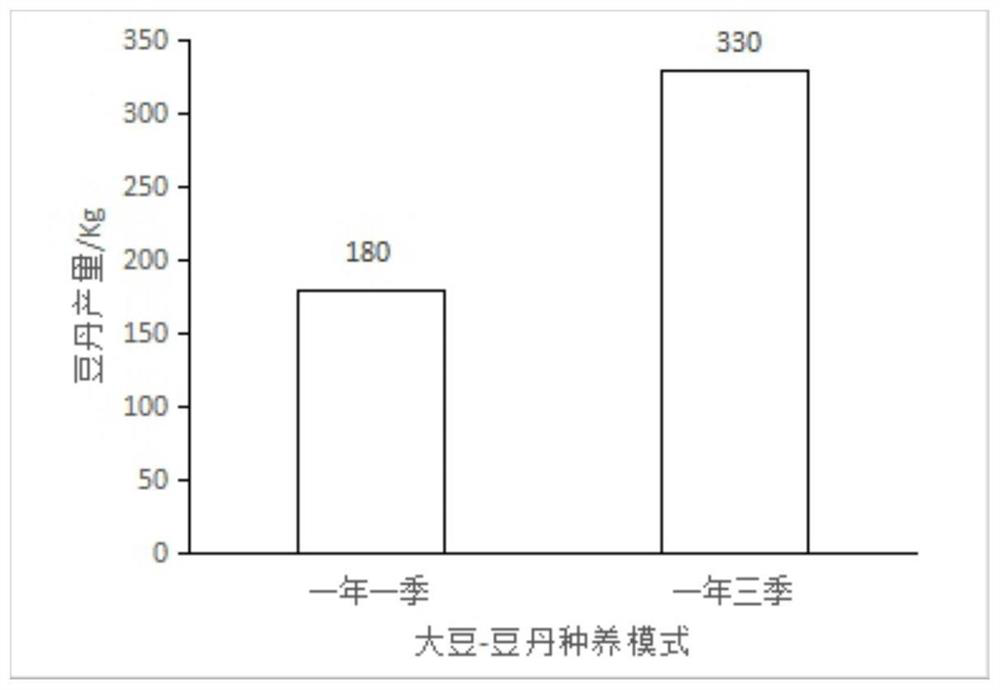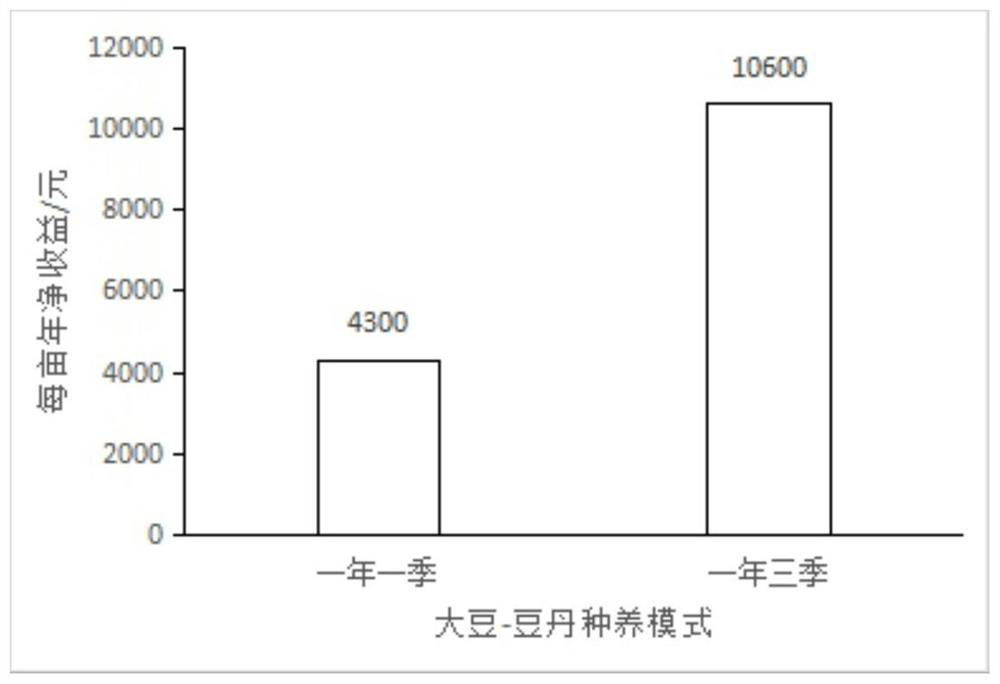Soybean-clanis bilineata larva one-year three-season planting and breeding mode
A technology of doudan and soybean, applied in the field of artificial breeding of resource insects, can solve the problems of prominent contradiction between supply and demand, different quality of doudan, low output of doudan, etc., achieving simple method, alleviating insufficient market supply, increasing annual output and net profit effect
- Summary
- Abstract
- Description
- Claims
- Application Information
AI Technical Summary
Problems solved by technology
Method used
Image
Examples
Embodiment 1
[0012] Embodiment 1 soybean planting technology
[0013] 1.1 Selection of soybean varieties: Generally, soybean varieties with tall plants, round leaves, and many branches and vines are selected. Commonly used varieties in production include soybeans (Dongxin No. 3, Xudou series, Zhoudou series), green beans and black beans. All soybean varieties can be planted in the first two seasons, and green beans with long growth period and low temperature tolerance are better for planting in the third season.
[0014] 1.2 The environment of the place of production: choose an area without pesticide pollution and a good ecological environment. The soil is fertile, loose, and the fields with good drainage and irrigation.
[0015] 1.3 kinds of pre-treatment: After the seeds are screened, they are aired (non-exposed) for 2-3 days, and the seeds are seed-dressed; after the soil is prepared with a certain proportion of fertilizer, spray a small amount of water to make the soil moist, and the...
Embodiment 2
[0021] Embodiment 2 Soybean seed production technology
[0022] 2.1 Soybean seed selection: In November every year, dig out the 5th-instar mature larvae of the bean horn moth cultivated in the third season of diapause in the soil, and select the non-injured, black-spot-free, circling worm body, and vigorous soy bean As breeding insects.
[0023] 2.2 Preservation of overwintering species: Preserve the preferred seed worms of soybean red in the wooden box prepared with the substrate (local soil and sawdust at a ratio of 2:1) in the delivery room. The wooden box is 100cm×200cm, and about 5 instar larvae are placed 5kg, keep the soil humidity about 20% during the wintering process, and pick out the bean dans that die due to dehydration or infection.
[0024] 2.3 Warm seeds: the time is at the end of February next year, the temperature of warm seeds is 28-30°C, and the temperature can be adjusted according to the growth status of soybeans. If the power of the heating facility is ...
Embodiment 3
[0028] Embodiment 3 Soybean breeding and field management
[0029] Two days after hanging the eggs, pay attention to observe the hatching rate of the eggs to ensure the base number of hatched larvae. During the breeding period, it is mainly to prevent birds from entering the greenhouse to harm the bean larvae. After August, a large number of lepidopteran pests will appear in the greenhouse, mainly including Spodoptera litura, beet armyworm, and inchworm. Their larvae have strong competition with the bean larvae. relationship, especially when the larvae of Spodoptera litura occur in large numbers, the larvae of soybean Dan generally no longer feed, stop growing until they die. Therefore, appropriate short-acting and low-toxicity insecticides should be sprayed on bean leaves 15 days before soy bean eggs are put in to reduce the population base of pests. At the same time, according to the soil moisture, timely irrigation and water replenishment. Peanut bean is peeled twice, tha...
PUM
 Login to View More
Login to View More Abstract
Description
Claims
Application Information
 Login to View More
Login to View More - R&D
- Intellectual Property
- Life Sciences
- Materials
- Tech Scout
- Unparalleled Data Quality
- Higher Quality Content
- 60% Fewer Hallucinations
Browse by: Latest US Patents, China's latest patents, Technical Efficacy Thesaurus, Application Domain, Technology Topic, Popular Technical Reports.
© 2025 PatSnap. All rights reserved.Legal|Privacy policy|Modern Slavery Act Transparency Statement|Sitemap|About US| Contact US: help@patsnap.com



